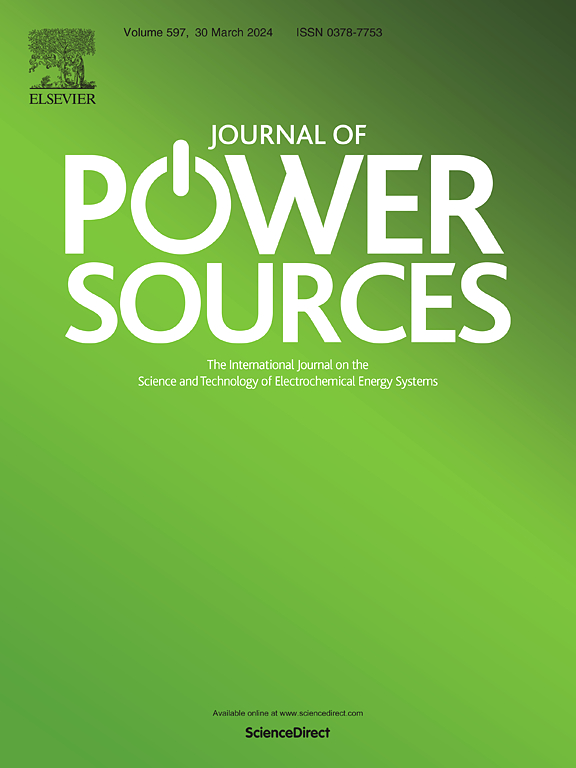Comparing the electrical performance of commercial sodium-ion and lithium-iron-phosphate batteries
IF 7.9
2区 工程技术
Q1 CHEMISTRY, PHYSICAL
引用次数: 0
Abstract
Commercial sodium-ion batteries with layered oxides as cathode material are available today. They can be produced with highly abundant raw materials and are considered environmentally friendly and cost-effective. Thus, sodium-ion batteries could replace lithium-ion batteries with lithium-iron-phosphate cathode on the market to some extent. However, a systematic evaluation of their electrical performance over different temperature ranges and a comparison to state-of-the-art lithium-ion batteries is still missing. In this study, we systematically compare the electrical performance of a high-energy and a high-power sodium-ion battery with a layered oxide cathode to a state-of-the-art high-energy lithium-ion battery with a lithium-iron-phosphate cathode for temperatures ranging from 10 °C to 45 °C. Both state-of-charge and temperature have a higher influence on the pulse resistance and the impedance of the sodium-ion batteries than the lithium-iron phosphate batteries. We show that in the low state-of-charge region, below 50 %, the energy efficiency losses of the sodium-ion batteries are approximately twice as high compared to cycling the cells above 50 % state-of-charge. This effect is even higher for the more application-oriented constant power instead of constant current measurements. Our findings indicate that the state-of-charge during cycling significantly affects the efficiency of sodium-ion batteries and should therefore be taken into account.

商用钠离子电池和磷酸铁锂电池电性能的比较
如今,商用钠离子电池以层状氧化物作为正极材料。它们可以用非常丰富的原材料生产,并且被认为是环保和具有成本效益的。因此,钠离子电池可以在一定程度上取代市场上的磷酸铁锂正极锂离子电池。然而,在不同温度范围内对其电气性能的系统评估以及与最先进的锂离子电池的比较仍然缺失。在这项研究中,我们系统地比较了具有层状氧化物阴极的高能和高功率钠离子电池与具有磷酸铁锂阴极的最先进的高能锂离子电池在10°C至45°C温度范围内的电性能。电荷状态和温度对钠离子电池脉冲电阻和阻抗的影响均高于磷酸铁锂电池。我们表明,在低充电状态区域,低于50%,钠离子电池的能量效率损失大约是50%充电状态以上循环电池的两倍。对于更面向应用的恒功率而不是恒流测量,这种效果甚至更高。我们的研究结果表明,循环过程中的充电状态会显著影响钠离子电池的效率,因此应该加以考虑。
本文章由计算机程序翻译,如有差异,请以英文原文为准。
求助全文
约1分钟内获得全文
求助全文
来源期刊

Journal of Power Sources
工程技术-电化学
CiteScore
16.40
自引率
6.50%
发文量
1249
审稿时长
36 days
期刊介绍:
The Journal of Power Sources is a publication catering to researchers and technologists interested in various aspects of the science, technology, and applications of electrochemical power sources. It covers original research and reviews on primary and secondary batteries, fuel cells, supercapacitors, and photo-electrochemical cells.
Topics considered include the research, development and applications of nanomaterials and novel componentry for these devices. Examples of applications of these electrochemical power sources include:
• Portable electronics
• Electric and Hybrid Electric Vehicles
• Uninterruptible Power Supply (UPS) systems
• Storage of renewable energy
• Satellites and deep space probes
• Boats and ships, drones and aircrafts
• Wearable energy storage systems
 求助内容:
求助内容: 应助结果提醒方式:
应助结果提醒方式:


